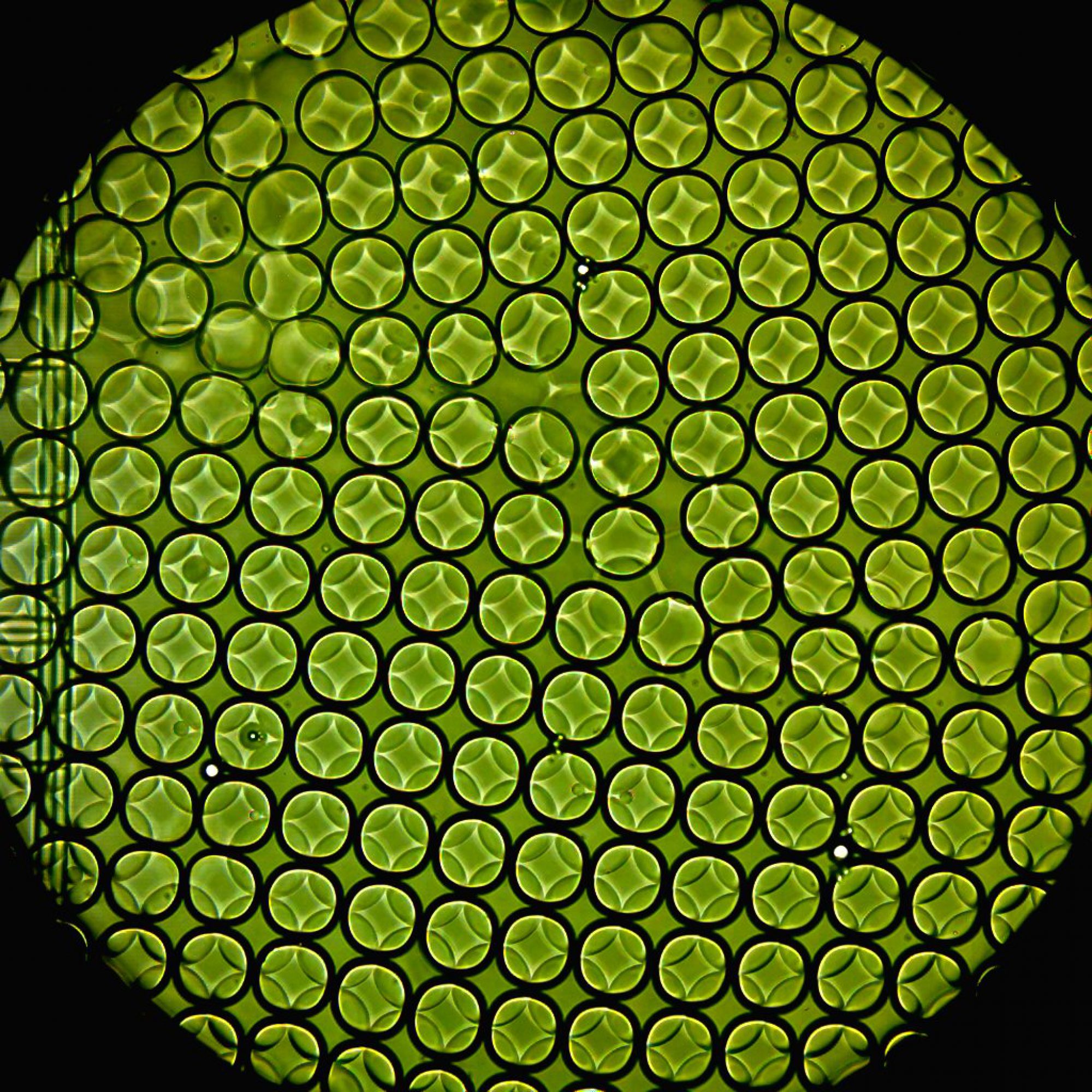mDrop-seq: Single cell RNA-seq (scRNA-seq) of microbes (and eventually, the microbiome!) is a major focus area in our lab. High-throughput microbial scRNA-seq is essential for understanding the complex interactions and heterogeneity within and between microbial populations and make the mechanism of microbial evolution and adaption clearer. Among other things, this has enormous health implications, from being able to determine outcomes of infectious diseases to fighting antibiotic resistance.
So what are we waiting for? Single microbial cell RNA sequencing at any useful throughput is intrinsically hard. Adapting Drop-seq to microbes is hard, in particular, for us the following reasons:
Tough cell walls: While mammalian cells can be lysed in aqueous drops using standard detergents, there are currently no techniques for single-cell lysis of microbes. This is especially challenging due to the tough microbial cell walls composed of chitin, beta-glucan, and manno-protein. To lyse C. albicans, a fungal prokaryote in drops, for example, we need to use a combination of chemical and enzymatic lysis modalities that include rigorous thermo-cycling.
Lack of poly-adenylated mRNA in eukaryotes: Due to absence of 3′ polyA tails in eukaryotic mRNA, we will need to design a new scheme for transcript capture, and also a way to get rid of genomic DNA and ribosomal RNA to bring down sequencing costs.
Smaller transcriptomes: Microbial transcriptomes are usually small, with only a few copies of each mRNA expressed. Due to the lack of alternative splicing mechanism, there are also a smaller number of transcripts expressed, compared to mammalian cells and thus capture efficiency needs to be improved commensurately.
We are working on addressing each of the above challenges, independently.
For example, we are developing a suite of tools to break the microbial cell wall. We are using Candida albicans, a fungal pathogen to develop lysis techniques. As a first step, we assess lysis using cell-impermeable fluorescent stains and/or fluorescent reporters and light microscopy. We anticipate that any method capable of lysing the thick cell wall of C. albicans will also be able to lyse all Gram-negative and most Gram-positive and fungal microbes. To lyse C. albicans cells in drops we will use a combination of chemical, enzymatic (e.g., zymolyase), mechanical (piezoelectric) acousto-mechanical (e.g., Surface Acoustic Waves), plasmonic or optical (e.g., laser ablation) techniques. One such tool, which we call ‘The Jaws of Death’ aims to do so mechanically (Read more). Note that the microbes may need to be snap-frozen to halt transcription and then immediately lysed to prevent confounding effects from stress-response genes.
We test each candidate lysis method in drops for its ability to yield RNA that is compatible with RNA-Seq library preparation. We then isolate lysates from drops by breaking the drops to release contents, and assess RNA quantity and integrity using BioAnalyzer, as well as its suitability for reverse transcription (RT) and PCR amplification. Drops containing single-cell lysates are then treated with DNase to get rid of genomic DNA, and fused with drops containing unique bar-coded micro-beads using electrodes fabricated on microfluidic chips. Following RNA capture onto bar-code beads, we perform RT-PCR in drops, and then break drops to pool cDNA for ribosomal cDNA depletion.
We have also developed a Drop-seq based technique that can be used to perform scRNA-seq on pathogenic yeasts. We have extensively benchmarked the technique using Saccharomyces cerevisiae and Candida albicans and applied it to characterize transcriptional heterogeneity between single S. cerevisiae cells under heat shock and C. albicans cells under fluconazole treatment (Read more).
We are thankful for the NIH Director’s New Innovator Award for supporting this work.
